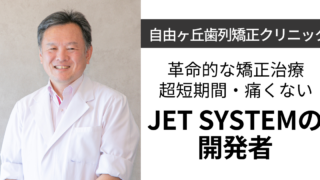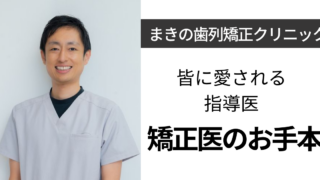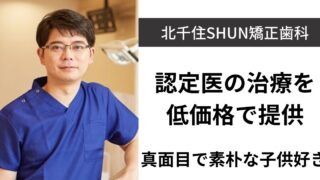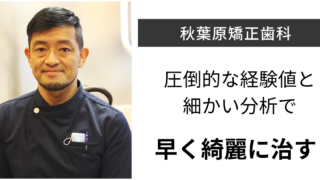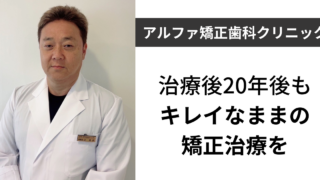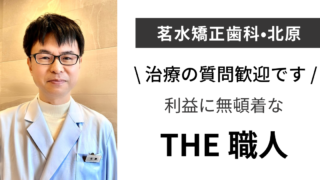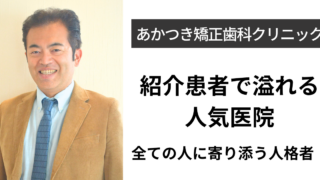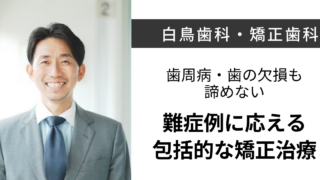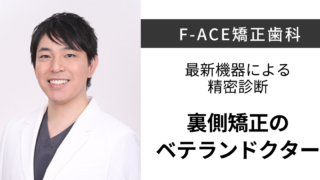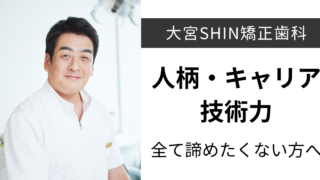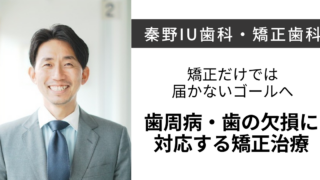
部分矯正できない例とその理由|全体矯正が必要なケースとメリット

先生、部分矯正を希望しているのですが、私の歯並びだと部分矯正はできないと言われました。
どうしてですか?

矯正部分矯正は、治療期間が短くて費用が安い傾向があるため、希望する人も多いですよね。
分かりました。
今回は、部分矯正できない例とその理由、全体矯正が必要なケースとメリットについてお話しします!
部分矯正ができない例と理由

部分矯正ができない例は、以下の2つです。
- 噛み合わせに問題があるケース
- 歯を並べるスペースが3mm以上確保できないケース
それぞれ、具体例と理由を解説します。
噛み合わせに問題があるケース
噛み合わせに問題があるケースは、部分矯正で治せません。
部分矯正は、前から数えて3番目の歯(犬歯)まで、もしくは4〜5番目の歯(小臼歯)までの歯を動かして歯並びを改善します。
奥歯まですべての歯を動かす全体矯正よりも改善できる範囲が限定されているため、
- 出っ歯
- 受け口
- 開咬
- 過蓋咬合
- すきっ歯 など
このような症例で噛み合わせに問題があるケースは、十分な治療効果が期待できず、部分矯正では治せません。
噛み合わせに問題があるケースとは、上下の顎の大きさや前後の位置関係など、骨格的な原因で歯並びや噛み合わせが悪い症例です。
このような場合は、もし部分矯正で治したとしても「前歯はきれいになったが奥歯が噛まない」などの新たな問題が生じる可能性があります。
歯を並べるスペースが3mm以上確保できないケース
- 歯並びが凸凹している(叢生)
- 出っ歯
- 受け口
- 正中のズレ など
このようなケースで、歯を並べるためのスペースが3mm以上必要な場合は部分矯正ができません。
歯を並べるスペースが確保できない状態で部分矯正をすると「出っ歯になる」などの問題を生じる可能性があります。
通常、歯並びを整えるには以下のような方法で歯を並べるためのスペースを確保します。
- IPR(ディスキング)
- 顎の側方拡大
- 奥歯を後ろに動かす
- 抜歯
- 顎の骨を切る(外科矯正治療)
歯を並べるために必要なスペースが少ない場合は、IPRや顎の側方拡大などで対応できます。
しかし、歯を並べるためにたくさんのスペースが必要な場合は、より多くのスペースを作れる抜歯や顎の骨を切る処置が必要になります。
部分矯正で用いることができる方法は、基本的にIPRのみです。
IPR以外の方法で歯を並べるスペースを確保した場合、スペースを埋めるためには奥歯まで歯を動かす全体矯正が必要になるからです。
IPRとは、歯と歯の間を薄く削って歯を並べるためのスペースを確保する方法です。
IPRで歯を削れる量は1箇所で最大0.5mmです。部分矯正では前歯の部分しかIPRができないため、作れるスペースは3mm前後となります。
そのため、歯並びを整えるために3mm以上のスペースが必要な症例は、部分矯正の適用外となります。
全体矯正が必要なケースとメリット
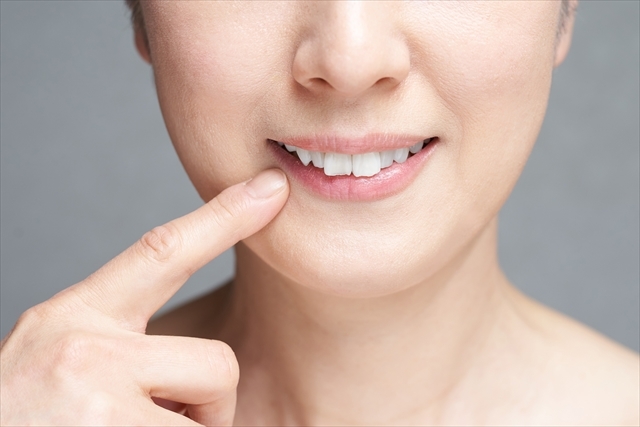
全体矯正が必要なケースは歯を並べるために3mm以上のスペースが必要で、噛み合わせに問題があるケースです。
全体矯正をすると部分矯正よりも治療期間が長くなって費用もかかります。
しかし、全体矯正は奥歯まで動かして全体の噛み合わせを整えることができるため、部分矯正にはないメリットを得ることができます。
全体矯正をするメリットは、以下の3つです。
- さまざまな症例に対応できる
- 噛み合わせまで治せる
- 横顔の大きな変化が期待できる
さまざまな症例に対応できる
全体矯正は奥歯まですべての歯を動かすので、軽度〜重度までさまざまな症例に対応できます。
全体矯正は治療範囲が限定されない分、抜歯や顎の骨を切る処置によって大きく歯を動かせるため、噛み合わせや骨格的な問題がある歯並びにも対応できます。
噛み合わせまで治せる
奥歯まで動かして噛み合わせを整えることができるので、噛み合わせの悪さからくる肩こりや頭痛などを改善できる可能性があります。
横顔の大きな変化が期待できる
口ゴボや出っ歯、受け口などで横から見たときの口元にコンプレックスがある場合は、全体矯正をすることで横顔の大きな変化が期待できます。
元の歯並びや骨格、治療計画によって横顔がどのくらい変化するかは異なります。
歯並びによっては部分矯正でも横顔の印象が変わることがありますが、全体矯正の方が大きく口元を後ろに下げることができるので、横顔の変化も大きくできます。
横顔がきれいに見えるようにEラインを整えたい人で大きく口元を下げた方がいい症例の場合は、全体矯正がおすすめです。
部分矯正できる範囲と方法
部分矯正では、以下の2つの装置を使って歯並びを治します。
- ワイヤー矯正
- マウスピース矯正
ワイヤー矯正
金属やセラミックなどでできたブラケットとワイヤーを着けて、歯を動かす方法です。
ワイヤーを歯の表側に着ける方法と裏側に着ける方法があります。
ワイヤーを着ける位置が歯の表側のものを「表側矯正」、歯の裏側のものを「裏側矯正」または「リンガル矯正」と言います。
ワイヤー矯正の部分矯正で治せる範囲
部分矯正では、前から3番目の歯(犬歯)までを対象とすることが多いです。
治療対象となる歯にだけ装置を着けるので、全体矯正と比べて違和感は少ないです。
費用と治療期間
表側矯正と裏側矯正は、装置の原価の違いや治療技術の難易度が違います。
そのため、治療期間に大きな差はありませんが、治療にかかる費用は異なります。
表側矯正よりも裏側矯正の方が装置の原価が高く治療も難しいため、基本的には裏側矯正の方が費用は高い傾向があります。
表側矯正
- 費用→約8〜45万円
- 治療期間→約3〜7ヶ月
裏側矯正(リンガル矯正)
- 費用→約16〜55万円
- 治療期間→約3〜7ヶ月
マウスピース矯正
透明なマウスピースを1日20〜22時間以上装着して歯並びを整える方法です。
治療対象となる歯にだけ装置を着けるワイヤー矯正とは違い、奥歯まで覆うマウスピースを用います。
奥歯まで覆うマウスピースですが、部分矯正の場合は治療対象となる歯だけが動くように設計されているため、奥歯は動きません。
マウスピース矯正の部分矯正で治せる範囲
マウスピースを使った部分矯正では前から5番目の歯(第二小臼歯)までの前歯10本(上下合わせて20本)を治療範囲としていることが多いです。
ただし、マウスピース矯正にはさまざまなブランドがあります。
マウスピース矯正ブランドによって治せる範囲が違うため、治療前に確認しておきましょう。
費用と治療期間
- 費用→10〜80万円ほど
- 治療期間→3ヶ月〜1年ほど
まとめ
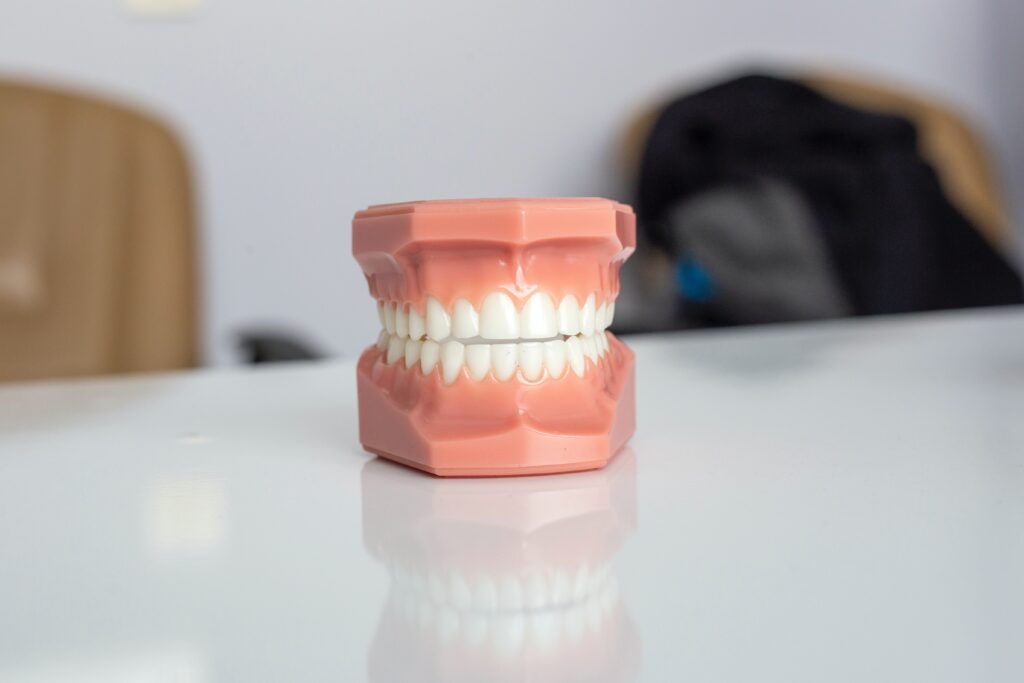
部分矯正は歯を動かす範囲が限定されています。
そのため、歯を並べるためのスペースが確保できない歯並びの人、噛み合わせに問題のある人は部分矯正ができません。
無理に部分矯正で歯を並べると「噛めない」「出っ歯になる」などの問題が生じる可能性があるので注意しましょう。
365dentistでは、
- 歯科医師運営のオープンチャットでのご相談
- あなたにあった歯医者探しのお手伝い
- お口に関するお役立ちコラム
で、あなたのお口の健康と美をサポートいたします!
部分矯正ができないかとお考えの方は、まずは歯科医師運営のオープンチャットでお気軽にご相談ください!
関連記事:部分矯正で出っ歯は治せる?
365dentist総監修 歯科医師/勝屋友紀子
長崎大学歯学部卒業、〜2018 九州医療センター、2018〜現在 都内歯科クリニック勤務
監修 歯科医師/Naomi
臨床研修終後、都内審美歯科勤務。現在は歯科医師/歯科ライター

